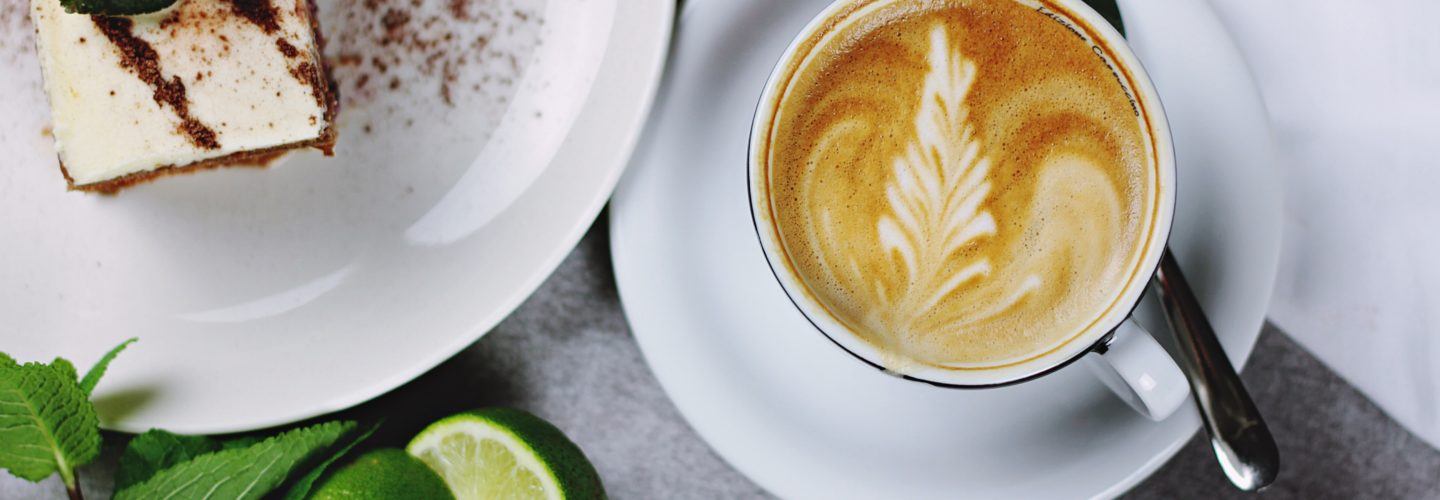This week I had dinner at a great steakhouse in New York with a very good friend. Like any two “normal” guys after a long day, all we could talk about was science, and on this particular night the topic du jour was NAFLD (non-alcoholic fatty liver disease for the non-cognoscenti). We ate, we drank, and we shook our heads in disbelief at the thought of 7 million children in the United States being afflicted with NAFLD. In the next few years NAFLD will become the number one indication for liver transplantation (not a typo).
After dinner, my friend, who I dine with almost every time I’m in NYC, made a comment about how many vegetables and how much fruit I consumed.
I had the following: a chopped salad, tuna tartare, a 12 oz filet; and we split an order of sautéed onions, brussels sprouts, and a bowl of berries.
He asked, “How are you able to stay in ketosis with all of those carbs?” I responded, basically, that for the past few months I have not been consistently in ketosis, and when I am it’s only following a long bike ride where my BHB levels may get back into the 2-3 mM range. Most days, however, I live in the 0.3 to 0.8 mM range, depending on the time of day. (In my mind, to reap the benefits of nutritional ketosis, one probably needs to consistently be in the 1-3 mM range, and for some “applications” 3-4 mM is probably ideal.)
So what gives, you may be thinking. Is Peter Attia not Mr. Ketosis? Well, my friend suggested it might be time for another one of the dreaded what-do-I-eat posts.
Anyone who knows me or who has read this blog for a while will appreciate the fact that I loathe talking about what I eat. Why? Because, it unfortunately gets interpreted by many as what they should eat. It’s like asking me what exercises I do, and inferring you should do the same. It doesn’t make sense. I have specific genetic factors, epigenetic alterations, and goals. These factors coalesce to shape my behavior – how I exercise, what I eat, what I supplement.
A little backstory first
In September of last year, for my wife’s birthday, we went to our favorite restaurant in San Diego, where we live. The day before I emailed the owner and general manager, both friends, and asked for them to have one of our favorite off-menu items on hand (the best sushi in San Diego). They happily obliged and asked which of their desserts my wife would most like. I said something to the effect of: well, they are all great, so you pick.
The next evening, after eating more sushi and sashimi than I could imagine (I ate 3 platters myself), they brought out a platter with a full size serving of each of their signature SIX desserts, each with a lit candle. We sang Happy Birthday, blew out the candles, and my daughter and wife, themselves already stuffed, proceeded to have a small forkful of each of the six desserts. My daughter said, “Daddy, these are so yummy! Why don’t you have a bite?” To which my wife echoed, “Yea, they really are ridiculous…”
And in that instant, I made a decision. I did something I had not done in 4 years (to the month, actually). The decision was this: about 3 or 4 times a year (I opted for my wife’s and daughter’s birthdays, Thanksgiving, and maybe something else), I would – for one meal – eat whatever the hell I wanted.
In the next 15 minutes I devoured the remaining 4/5-ths of EACH of the six culinary masterpieces in front of me. From cheesecake, to carrot cake, to decadent ice cream, and stuff I didn’t even recognize, I ate it. In an instant I felt both wonderful and horrible. The look on my wife’s and daughter’s faces – alone – was worth it. Their jaws on the table the whole time. The taste was beyond what I remembered (actually, much sweeter than I remembered, probably because when you don’t eat sugar for 4 years, well, you know).
I could barely get up from the table. That night, when we got home, I had a horrible headache. 1,000 mg of Tylenol and 2 glasses of water later, I still couldn’t sleep. I eventually got a few winks of sleep. The next day I felt hung over – a feeling I had not experienced since my 26th birthday. My fasting glucose was 126 mg/dL and BHB was 0.2 mM. Clearly I was out of ketosis.
I decided to go out for a glycogen-depleting workout (multiple sets of 3 min all out intervals on the bike) and about 36 hours later, after resuming my normal diet, I was right back into ketosis and felt just fine. I told my wife I was going to repeat this experience on Thanksgiving. As such, and despite how far in advance this was, I asked her to plan to make an extra bowl of my favorite Thanksgiving dish – candied sweet potatoes – baked sweet potatoes coated in melted marshmallows.
Thanksgiving came and went, and I repeated the same act of debauchery during the big feast. Sure enough, by the Sunday morning of Thanksgiving weekend, I felt back to my baseline. I haven’t gone on a bender like that since, but I’m probably due for one.
I’m sure at least some of you are asking, “Does Peter still think sugar is metabolically deranging?” The answer is absolutely, at the levels it is consumed by most Americans. If you want a refresher on my point of view on sugar, definitely give this post a re-read.
So what did I take away from this?
Somewhere between “every day” and “never” there is a tolerance I have developed to consume massive amounts of carbohydrates, and specifically sugar. Now, there are two components to this: a purely physiologic one and a behavioral one (which I suspect is heavily influenced by my physiology).
Focusing just on the physiology, I would guess I could probably “tolerate” a binge like that every few weeks with little measurable or discernable adverse effect. I won’t even attempt to argue whether it’s every 7 days, every 14 days, or every 30 days. But, it’s probably somewhere in that vicinity.
What about the behavioral side? Well, I suspect there exists a different “frequency distribution function” that describes how often I could binge like this without resuming unhealthy eating habits in the long run. If I had to guess, I think the threshold for recidivism is higher from the behavioral tipping point than it is for the physiologic one. In other words, habits matter. I can probably tolerate – physiologically – more sugar today than I can tolerate behaviorally.
One last point I’d be remiss to leave out. You should keep in mind that for a period of 4 years, my consumption of sugar (sucrose, HFCS, liquid fructose in the form of any beverage, etc.) has been less than about 5 grams per day. The average American, depending on which stats you believe (I think they are all pretty weak), consumes somewhere in the neighborhood of 100 to 120 grams per day of sugar, NOT including the liquid fructose in juice!
So, I have to at least entertain the hypothesis that 4 years of avoiding sugar has been a sufficient enough period of time to offer me some sort of “metabolic reset.” Now, I have no intention of testing this. If I was once susceptible to insulin resistance, I’m pretty sure I will always be. But, an interesting Gedankenexperiment would have me going back to one of several different dietary patterns – vegan, but with no sugar; standard American diet with lots of sugar; modestly higher carb, but still sugar-restricted – all could offer insights into the physiology of adiposity and fuel partitioning in my metabolically reset condition.
How has this shaped my current eating behavior?
Sometime early in the New Year, I started really craving more vegetables. I’ve always loved them. Even in ketosis I still ate one or two salads each day most days, but I was pretty restrictive about the quantity of vegetables that had much carbohydrate in them (e.g., tomatoes, carrots). But now, I wanted even more. Big heaping bowls of curry stir-fry. (I have to toot my horn on this one thing. I make a really good, creamy, spicy curry stir-fry.) I realized this would probably knock me out of ketosis, especially with the large amount of tofu I mix with it and the yogurt I use to make the sauce.
My lunchtime salads were getting bigger and bigger, and I was piling more and more “stuff” into them. Almost laughable by the standards of those around me.
And I noticed I was eating less meat. Not at all by “design,” but somehow by seemingly craving less. It seemed an average week would have maybe 2 servings of red meat. When a great steak is placed in front of me, believe me, I enjoy every bite, but I found I just wanted it less. I also started craving a bit more fruit, especially berries and even apples, the former I consumed in modest amounts in ketosis, the latter I did not at all. (Because I know someone will ask – do I think red meat is harmful? – the answer is no, I do not believe so. Certainly not based on evidence I’ve seen to date, including the recent story about protein. For those looking to brush up on the state of evidence implicating red meat, I’d recommend three posts – one I wrote many moons ago in response to one of the dozen epidemiology stories, one written by Chris Masterjohn in response to the TMAO data, and one recently by Zoe Harcombe in response to the protein epidemiology).
I don’t know what to make of this, of course, and it may be nothing at all, other than an evolution of preference. I’ve checked mineral levels in my body in search of a clue (none showed up). Maybe I’m over- or under-saturated in some key nutrient?
Now, since everyone seems to care how much carbohydrate I consume, here is my current framework. I put carbohydrates into 5 essentially MECE categories:
- Those I consume daily – mostly salad stuff and other vegetables; about twice a week I make a curry stir fry with tofu, for example.
- Those I consume often – nuts, berries, almond butter (which I just spoon out of the jar), super starch (both as a meal replacement and post-workout drink).
- Those I consume intermittently – a couple spoons of rice here and there, especially when I make Indian food or when we have sushi; a piece of baked potato when it looks particularly appetizing. If my daughter “makes” spaghetti, which she loves, I’ll usually have a forkful to remind her that her dad is not a complete freak.
- Those I consume only on very special occasions – exceptional desserts, for example – about 2 or 3 times a year, like the ones I consumed on my wife’s birthday, or the candied yams. (NB: One thing I decided in an instant – if I’m going on a bender, it’s not going to be for “average” dessert like some lame birthday cake; it’s got to be best in class.)
- Those I still completely refrain from – I call these the “cheap” carbs – basically all else (including cookies, potato chips, cereals, and the candy bars they keep handing me on this flight as I type this), including any liquid form of fructose, such as juice or sports drinks.
Below is a “typical” 5 days of eating over the past few months. Keep in mind, I virtually never consume breakfast, maybe once a month (e.g., if I have a breakfast meeting). Essentially, I do all of my exercise (current routine, below) in a fasted state only consuming the BioSteel’s high performance sports drink (HPSD), which contains virtually no calories – maybe 8 kcal of BCAA per serving. So, despite the dietary changes I’ve made, and the fact that I’m not in ketosis most of the time, I remain seemingly well fat adapted, though RQ is a bit higher than before.
I should point out that I spend much less time exercising than I have historically, due to time constraints. But, I still aim for the following schedule, which is interrupted by travel during at least 2 or 3 weeks each month. The schedule below amounts to about 14 to 16 hours per week of training.
Monday – high intensity lift, followed by swim
Tuesday – ride (tempo)
Wednesday – swim
Thursday – ride (TT practice or threshold)
Friday – high intensity lift
Saturday – ride (VO2 max intervals), followed by swim
Sunday – group ride or solo TT practice
I can’t believe I’m about to do this…I just have this horrible feeling someone is going to attempt to replicate this, bite-for-bite, for no good reason. Please refrain. Remember, this is what I eat because of how my body works.
Wednesday
Lunch – huge salad (bowl larger than my head) with romaine lettuce, kale, carrots, tomatoes, cucumbers, olives, mushrooms, chicken breast, 2 tbsp olive oil, 3 tbsp lemon juice, 1 tbsp white vinegar, 1 cup of almond slivers
Snack – a cup of macadamia nuts
Dinner – Another large salad, but no chicken or nuts in this one; 1 pound of salmon; bowl of berries to follow
Thursday
Lunch – huge salad (bowl larger than my head) with romaine lettuce, kale, carrots, tomatoes, cucumbers, olives, mushrooms, can of tuna, 2 tbsp olive oil, 3 tbsp lemon juice, 1 tbsp white vinegar, 1 cup of walnuts
Snack – 2 or 3 tbsp of almond butter (a zero sugar variety)
Dinner – Omelet made from 6 eggs (white + yellow), shredded cheddar, lots of other veggies; side of steamed broccoli in butter; 2 more spoons of almond butter after dinner
Friday
Lunch – same as Wednesday (I basically rotate salad back and forth about 3:1 in favor of chicken over tuna)
Snack – none
Dinner – Curry stir-fry containing tofu, carrots, broccoli, bell peppers, mushrooms, zucchini, and squash, in a sauce made from curry paste and Greek yogurt. I typically consume two heaping plates of this.
Saturday (post ride and swim)
Lunch – 7 hardboiled eggs, an avocado, 2 oz of cheese
Snack – a Fuji apple covered in almond butter
Dinner – 8 oz of steak (fillet, rib-eye, or tri-tip), 8 oz of salmon, large salad (sans meat and nuts, which I only do with lunch salads).
Sunday (post longer ride)
Lunch – The “Peter Kaufman” super starch shake (heavy cream, zero-sugar almond milk, a package of chocolate super starch, 2 tbsp of almond butter, an extra 20 g of Biosteel whey protein, frozen strawberries, ice – blend to a thick shake); I’ll drink 2 liters of this. Literally.
Snack – none
Dinner – Family sushi night! I’ll have a seaweed salad or two, huge platter of sashimi, California roll, and another specialty roll.
Lastly, because I know someone will ask, the few times I now take to measure, record, and tabulate exactly what I consume, it works out to about 3,500 kcal per day. But some days, especially when I travel, it can be as low as 2,000 kcal when I only consume one meal per day (dinner). Other days it can be as high as 5,000 kcal. But, 3,300 to 3,600 kcal per day is the typical range.
So, there you have it – the most irrelevant information you’re likely to find on this blog (except for what’s below… this is actually valuable stuff!)
Fashion tip of the month
While in NYC I realized – about 15 minutes before leaving my hotel for a very important meeting – that I had forgotten to bring cufflinks. My heart sank. I’ve never made this mistake before. I immediately realized why. While packing, and just about as I was going to grab a set, my phone rang and I was distracted. But that was neither here nor there. What was I going to do? I didn’t have time to buy a new set, and the hotel concierge didn’t have a set to lend me, so I grabbed some dental floss and tied the cuffs of my shirt together using precise surgical knots. I was pretty self-conscious that someone would notice and ask or comment, especially on a day stacked with so many back-to-back important meetings. Amazingly, no one said anything, though I could see some people looking at them and doing the double-take. Over that lovely steak dinner I alluded to at the top of this post, I told this story to my friend (who snapped the picture, below). His response? “Yea, I noticed it right away. I thought it was a new style. Very cool, actually. Kind of European.” So there you have it. Don’t say I never shared anything of value on this blog.
Photo by Toa Heftiba on Unsplash







Hi Peter, id really like to see more you tube videos. You really inspired me and my partner.
I wanted to know your thoughts on sweet potato.
Tony
Peter,
I completely understand your reluctance to post details about your diet. You knew only too well that there would be people trying to imitate/emulate your intake when their individual metabolisms and physiologic needs are so vastly different from yours. That said, put me in the camp that truly appreciates your willingness to put it out here anyway. Even if none of us should take it and run with it for ourselves, reading about other people’s experiences (especially ones like yours, because you measure and document everything so meticulously) helps me learn *so much* about human physiology and gives me an ever-expanding appreciation for how different one person can be from the next. As a nutritionist, I love “geeking out” on this stuff, and even though your personal experiences can’t be extrapolated to any populations at large, they contribute so much to the conversation and the *education* of us all.
Beyond that, I want to bring up an issue because I’m getting the sense that a lot of folks think ketosis is black or white, in or out. I might be somewhat oversimplifying things here, but please correct me if I’m overtly wrong about something:
Is there not a difference between “deep ketosis” and being *fat adapted*? (With “deep ketosis” meaning significantly elevated B-OHB levels, and “fat adapted” meaning having been on a lower-carb, insulin-sensitizing diet for long enough that the metabolic and mitochondrial machinery are in place for a person to be running on fat [and small amounts of ketones] most of the time.) I’m asking because it sounds like there’s some confusion (and possibly unwarranted fear) about a one-off high-carb meal causing someone to get “kicked out of ketosis” — as measured on urine and/or blood test strips. Am I wrong in thinking that yes, ketone levels will be lower (and possibly not register at all) in an acute time period after an increased carb intake, but that does NOT reverse months and sometimes years of fat adaptation. The quantity and quality of mitochondria–and specifically, their flexibility to transition relatively easily between burning glucose and burning fat–have not been destroyed because John Doe decided to have pasta and a piece of cheesecake.
J. Stanton over at Gnolls had a freaking excellent piece about this — it was his presentation at the 2013 Ancestral Health Symposium: https://www.gnolls.org/3637/what-is-metabolic-flexibility-and-why-is-it-important-j-stantons-ahs-2013-presentation-including-slides/
In reading through all the comments here, I can’t believe people are giving you flak for literally three or four days out of *an entire year* wherein you allow yourself to have a few things you wouldn’t normally. And if you’ve upped your CHO intake so as not to be in heavy ketosis all the time, so what? I don’t think these people have any idea how demanding your research, lecture, and exercise, schedule is, physically, intellectually, and all other ways. You probably get more done before 10am than I accomplish in a week. 😉
And for people to focus on semantics is…well, I’m not sure it’s helpful. I don’t think using words like “splurge” or “bender” implies an unhealthy addiction or relationship with food — especially if, like I said before, it happens 3-4 times a YEAR, rather than 3-4 times a week or month, like it probably does for millions eating the SAD.
Someone used the word “splurge” regarding the first apple they’d had in 3 years. I certainly recognize that some people might *need* to be at extremely low levels of CHO for the duration, but for the sake of reason, I thank you so much for injecting a little “relaxation” into the discussion. I understand that even an apple could be a “splurge” for someone — I really do. But it’s also very refreshing to see you take a step back, especially as it regards how your actions might be shaping your daughter’s view about healthy eating — or a healthy philosophy toward food.
I don’t remember where I saw this, but this is one of the most insightful things I’ve read in a while on all this: “You should follow the most restrictive diet you can *enjoy,* not the most restrictive one you can tolerate.” Will anyone feel more righteous on their deathbed if they can say they went 50 years without tasting a single sweet summer strawberry?
(No tomato throwing from the peanut gallery, please. I wrote my thesis on Alzheimer’s as Type 3 diabetes. I am well aware of CHO intake, ketones, and brain function. I’m just pointing out that complete and total inflexibility at *either* extreme might not be the best way to go. [Either all keto all the time, or everybody eat as much sugar as they can cram down their piehole.)
Meant to be more clear above:
If long-time low-carber John Doe eats whatever he wants a couple times a year, he’ll be “knocked out of ketosis” and will feel like arse in the short term, but the reason he’ll be back to normal in just a coupe of days is because his *fat adaptation* hasn’t gone anywhere. (Especially if exercise is involved in the interim and all that glucose & glycogen gets disposed of relatively quickly.)
I guess what I’m trying to say is, for someone who’s well fat adapted, the very–very–occasional day of throwing caution to the wind (or “kicking your heels up,” as Robb Wolf would say) just isn’t going to mean the difference between good health and a raging case of metabolic syndrome. Maybe–just maybe–the blood markers might move a teeny, tiny bit unfavorably, but again, if a once-a-year honking piece of carrot cake (or whatever) means the difference between trigs of 35 vs 40, or HDL of 85 vs 79, people need to weigh that against their quality of life and the simple pleasure we sometimes experience from good food and good company.
Agree. Sometimes people forget which function we’re most optimizing. In my view, it’s the “happiness function” more than any other. The “health function” is just one of the higher order terms that serves an an excellent — but incomplete — proxy.
Lots of words of wisdom in here.
Hi Peter,
The article cited in this post makes some interesting assertions regarding fat metabolism. Namely, that degrading fat metabolism may be a significant contributor to the metabolic problems people can have.
I haven’t seen that before – usually it’s all about too much sugar and the inability of some people to process it.
I’m curious if NuSI is looking at fat metabolism problems as well as sugar issues. (i.e. insulin resistance)
Thx,
Eric
Hello Dr. Attia
Do you still consume the same types, amounts, and brands of “daily supplements” as you did in part II circa Q# 2012?
Nope and nope.
Will you comment on what changes you have made?
Dear Peter,
Being an excellent Dad to your beloved daughter is clearly your Attia#1 priority. Let the blog go, if needs must. You’ll teach her to have a friendly relationship with food, and help her cultivate a healthy body image. Throw in the art of a quick wardrobe fix for good measure, and she’s well on her way! Kind regards, KM
Thanks, KM, I couldn’t agree more!
Peter i do landscaping & painting both very physically demanding jobs and still very low carb only from green veggies i have lost alot of weight in 3 months from being in a ketogenic state but im also worried that not getting enough carbs from alot of physical activity so should i up my calories in fat or add in some more carbs from say sweet potatoes and carrots on the days i work and remain high fat on my non work days
Hi Peter,
I do the “big five” workout once a week and I love it but I feel that maybe the big five are not enough to cover all the muscles (like the back side of the legs, abs or lower back). What exercices do you ad to the “big five”?
It would be nice to know also what your split routine consist of.
Thanks for your time.
Maybe another time. I can only handle so much “sharing” of my life at any point in time.
It´s ok Peter, when you want. I understand that we are a lot of people asking and we want to know every little detail. So no worries. The good work you are doing here is invaluable.
Gretings
Having a cheat day 4 times a year seems pretty reasonable to me….
Hi Peter,
I always appreciate these types of posts, especially when you seem to have tempered you dietary regimen to maybe be a more effective role model for your young daughter (I have two of them, so I may know where you are coming from).
Since a lot of folks come to low carb (keto) from paleo, I’m curious if you have any “foods” that you absolutely do not eat or eat very infrequently (like sugar-laden desserts 4 times a year, or so). For me, it’s wheat and sugar to a large extent (and anything soya!). I’ve lessened my objections to legumes somewhat as they are a great vehicle for olive oil and feta cheese (hey, I live in Greece). Just curious.
Thanks for your time.
Hi Peter,
I’d like to add another vote to the requests for a post on insulin sensitivity. I’d really like to understand insulin sensitivity/resistance better.
I was overweight and on the blood sugar high-low roller coaster most of my life. I started reading and learning about low carb diets 3 years ago. For my initial transition to low carb, I used “Life without Bread” as a guide. For the last year I’ve been in ketosis; which has been a real benefit…stable energy, better memory, and cogitative function. Through the whole process I lost 60 pounds, and have been weight stable for the last year.
I think I’ve read every post & comment on your web site. You have a rare ability to understand the science, analyze the data, make sense of it; and communicate clearly. I know you are very busy, but I really appreciate you taking the time to share your knowledge. You are helping a lot of people!
Perry
Ok, hope to get it to it next month.
Peter,
I just started reading your blog this week, and I am blow away. I have learned more in the last few days about nutrition than I have learned in my entire lifetime (I am 44 years old). I had always heard of the benefits of a restricted carb diet, but I never knew why. I am starting to look at food completely differently, as I recently began my journey to losing 50 lbs.
Thank you for opening my eyes and giving me the opportunity to learn from you.
Regards,
Dominick
Hope you find what you’re looking for, Dominick.
I guess there have been lot more wait and the votes for the part X of cholesterol…so first I would like to repeat my vote for the part X of cholesterol and then vote for the insulin post as well.
Hi Peter,
I was wondering if you had read Prof Tim Noakes’ new book ‘The Real Meal Revolution’ yet? And if so, what you thought of it?
Not yet.
Thank you Peter for generously posting great information.
Second go at low carbs for me, and I find myself eating a big fry-up every morning after my run. Lots of Bacon, Sausage, eggs, etc. I am also eating alot of red meat. Are Fry-ups ok, or should I curb them somewhat, and replace with a nice tuna salad every now and again? I don’t have a weight issue, but I do have a bodyfat issue in terms of marathon performance.
Your blog is a life saver. Found your site in October. I am 45 yrs old, started at 194 lbs now ~170. Was on cholesterol meds for close to 15 yrs.. stopped taking the meds after 2 months of LCHF diet.
Still on BP med. Do you have any recommendation for improving my Blood Pressure?
I like your blog. As an engineer, I really appreciate the math references that make their way into your posts, as well as the clear logic you use to boil complex topics down to something digestible for “biological laypersons.” Keep fighting the good fight, and I’ll try to do the same.
Hi Peter,
First off in case you don’t want to read the rest of the post, I want to add my vote for the two proposed posts – the IR one sounds great, especially if you address both pathological and physiological IR. The metabolic parameters post would be informative too. It was through your blog that I first truly learned and understood about cholesterol, despite being a family doc for over 30 years.
You are made of tougher stuff than I would have thought, but then, you have always shown steadfast resolve in your choices. I cannot imagine how it must be to put yourself out there for everybody to judge. Ultimately we can only judge ourselves. If you have been true to yourself and are comfortable with your choices, then “cheating” (dietary or exercise, or whatever) is something you will be less likely to do because it just doesn’t feel good. It’s not the way you structure your life. You sound very comfortable with your choices.
I started on my educational journey 2 years ago, I was never convinced that long term ketosis was an advantageous metabolic milieu. I have this nagging suspicion that any process that your body will summarily terminate , given a choice, cannot be the preferred environment. I’ve currently settled on a non grain, non legume diet (ie protein/fat, fermented dairy, veggie, minimum fruit/nut), along with IF/HIIT/HIT(love McGuff – training to failure makes sense) with a recent leaning toward consciously supporting the microbiome (increased pre and probiotic intake).
I’ll continue to modify my choices as new research emerges. Stagnating educationally is not an option. You should be very proud to have educated so many, helping them to make their own more informed choices. I thank you from the bottom of my heart.
Happy the blog has helped you with your patients, and really appreciate the encouragement. Sounds like your journey is going very well!
Hi Peter,
I was wondering whether sweet potato starch powder is similar to Superstarch? I read that 100g of sweet potato. starch has 0g sugar.
I have an inkling that I am wishing for too much.
Any response would be much appreciated. Thanks.
(following a 18/6 one meal a day keto diet.)
Not really.
Dear Dr. Attia,
I must congratulate you for your personal journey and the wonderful job you are doing here in terms of explaining what a Ketogenic diet is and all the advantages and disadvantage (just one) it has. It is very difficult to find a doctor with such broadmindedness, specially today.
It has been a very busy weekend trying to read up all your posts, they are all so interesting and mind blowing!
I feel that this blog comes at the right time. I was already on the path: Switched 2 years ago from high carb almost vegetarian diet to a paleo diet, trying to fix a candida gut infection and mild depression. After that I gradually increased fats and protein, and reduced fruits realizing that I felt better than ever.
After this weekend readings, it feels even sadder to see so many relatives and loved ones insisting on poison themselves, eating all that “healthy whole bread and fruit”, searching low fat dairies and complaining about joint pain (elders) or fat bellies (youngsters) and lack of energy. Yesterday I went to the cinema and felt depressed about all the fast food restaurants there were and all the families eating there. And that was a rich area.
Your blog and the NuSI initiative are truly laudable, keep spreading and demonstrating the facts!
I wish you get all the strength in the world to undertake this task.
Thank you, Paloma.
For me a LCHF diet works, but periodically I will eat those high carb foods for three reason: I can’t stop myself, I feel like a normal person again, and it freakin taste good. Good to know you are human Peter.
Well…I think my wife would disagree with you…she thinks I’m a freak beyond words, but I guess it’s relative.